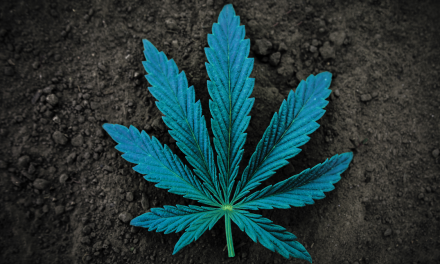Throughout September, the Missouri Behavioral Health Council and Missouri Department of Mental Health (DMH) hosted a webinar series for Suicide Prevention Awareness Month. “Working to Break the Lethal Connection Between Substance Use and Suicide” explored not only how access to lethal substances pose an increased risk of suicide, but also how addiction and suicidality can co-occur.
Presenters Stacey Williams, LCSW, and Rick Strait, LPC, CRDAC, detailed recent developments in suicide prevention training for providers and offered recommendations to assist substance use disorder (SUD) professionals in recognizing suicidality. Williams is the suicide prevention coordinator at the Missouri DMH. Strait is the ITCD program manager at the Community Counseling Center.
The presentation continued with Diana Cortez-Yanez, a recovering alcoholic who shared her personal journey of suicidality and how alcohol played a role in multiple suicide attempts. Immersed in an environment, culture, and religion that didn’t discuss suicide left her feeling alienated until discovering she was not alone in these thoughts. Now, as a faculty member of Zero Suicide, Cortez-Yanez shares her story to offer hope and support to substance users on their own journeys.
“What I haven’t been sharing – and not on purpose – is the relationship to alcohol within my suicidality,” she said. “I hadn’t even thought about it, but in all my attempts, alcohol was involved. I’m so glad to be able to bring that part of my story up and see if it can help us see the correlation and figure out what can be done about it.”
The Lethal Link Between Substances and Suicide
Suicide is a leading cause of death among people who misuse drugs and alcohol, as substance users are 10 times more likely to die by suicide than the general population. Currently, one of the most commonly used methods to attempt suicide is to overdose.
Substance use, especially alcohol use, is a significant factor linked to a substantial number of suicides and suicide attempts. Alcohol intoxication is present in about 30-40% of suicide attempts and suicides. However, as Williams pointed out during the presentation, the combination of stigma and lack of protocol surrounding suicide can lead to skewed statistics.
“On an individual level, it’s difficult to know beyond the presence of a suicide note or an explicit warning sign, if an overdose is a suicide attempt,” Williams said. “Most likely, the death would be ruled an accidental overdose without those things in place. On a population level, there’s also no standard or consensus for classifying overdose events as suicide. For that reason, we can’t really say if a lot of overdoses were suicide or not.”
Cortez-Yanez didn’t have an active addiction; alcohol merely provided a means to a lethal end. “I don’t like calling it liquid courage because it almost sounds positive, but that’s what I used it for,” she said. “I knew if I didn’t drink, I wouldn’t have the courage to actually go through with it.”
Throughout treatment, she was asked if she drank because that was the only way she would attempt, or if she only attempted because she was drunk every time. “At first, I was drinking so that I would go ahead with it,” she said. But as time went on, it developed into an active addiction, and the lines between whether her suicidality fueled her alcohol addiction or vice versa became blurred. “I already felt bad and already had the suicidality,” she said. “Now, all of that has increased 100%.”
A combination of other factors also added to the cycle, including shame from her family. Growing up in a religious environment where suicide was not discussed, Cortez-Yanez felt alone in her thoughts. The misunderstandings and stigma surrounding addiction caused her to suffer in silence as her dependency on alcohol worsened. On top of pre-existing physical ailments that caused her to feel sick, she had to continue drinking to fight off the shakiness and other symptoms of alcohol withdrawals.
Integrating Suicide and Substance Use Treatment
Because they frequently co-occur, misunderstanding and miseducation surrounding suicidality and substance use can lead to increased risk of injury and death. Cortez-Yanez, who frequently drank to the point of blacking out, believed that to black out meant simply to fall asleep. “I didn’t realize that even though my conscious mind wasn’t aware, I was still doing things,” she said. “That’s always dangerous.”
“I already have the mentality of suicide in my mind and want to die, I have all these added things that alcohol and addiction bring to the table, and then I’m not conscious of what I’m doing,” she continued. “It’s very possible that during any one of those times, I could have attempted.”
Cortez-Yanez received her one and only DUI while drinking and driving, a situation she specifically recalls as a deliberate suicide attempt. Driving on the freeway one night, she actively thought about crashing her car into another over and over. “I was so desperate and my inhibitions were lowered – obviously I wasn’t thinking correctly,” she said.
As part of her treatment, she began seeing a drug and alcohol counselor and a therapist, both located in the same building. However, to her surprise, the two never had contact and did not collaborate on her treatment.
“For us to help prevent suicide, we have to be able to integrate those,” she said. “We talk about healing the whole person and in this regard it’s so important because it’s two things that really affect the person.” She pointed out that while statistics surrounding substance use and suicide are already alarming, it’s likely that the reality is even higher than what’s reported due to how many overdoses are viewed as an accident, as Williams pointed out.
Fortunately, Cortez-Yanez is able to shed a light on the gray area between substance use and suicide, using her experience as an example and cautionary tale. “Alcohol affected me in every single way,” she said. “I’m so glad it’s getting brought up now. It’s so wonderful Missouri is doing that in this way.”
“I really believed I was the only person on earth with those thoughts,” she continued. “There’s shame, stigma, that’s not helpful for the people going through it. Speaking about it is important, that’s why I do what I do. Speaking about it is the beginning for all of us to get better and help improve suicide prevention.”
Recommendations for Providers
To assist providers in identifying the link between substance use and suicide, and treat it effectively using evidence-based approaches, Williams and Strait developed a curriculum geared towards individuals working with the substance use population. The 14 total trainings aim to help providers understand the co-occurrence between substance use and suicide, intervene and treat effectively, and offer support throughout treatment.
Surveys completed by training participants demonstrated overwhelmingly positive results, the most shocking of which being a comment reading, “I have been working in this field for 13 years and this is my first training in suicide prevention.”
“This is exactly why I want to do this work,” said Strait. “A suicidal crisis can be overcome. I cannot emphasize that point enough. It’s important to recognize that we can get past that crisis.”
Register for Williams and Strait’s training, “Question Persuade Refer for Substance Use Disorder Treatment Providers,” and learn more at https://qprsud.eventbrite.com.
Learn more about Cortez-Yanez and her story by visiting https://dianacspeaks.com/.
Watch the recording of this session at https://missouribhc.app.box.com/s/sld1jbxflaa5ihssjbolo1qs8lu6p5wz and register for the remaining upcoming series sessions at https://web.cvent.com/event/4b5031a6-d485-4ada-b0f2-d1771e2614d5/summary?locale=en-US&i=7ovviZWYnk2W-EQFcDJ9XQ.
Read part one of the Suicide Prevention Series.








